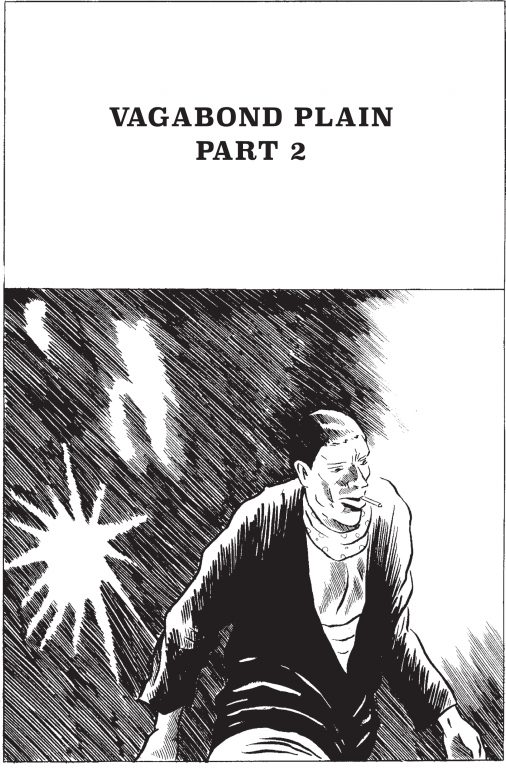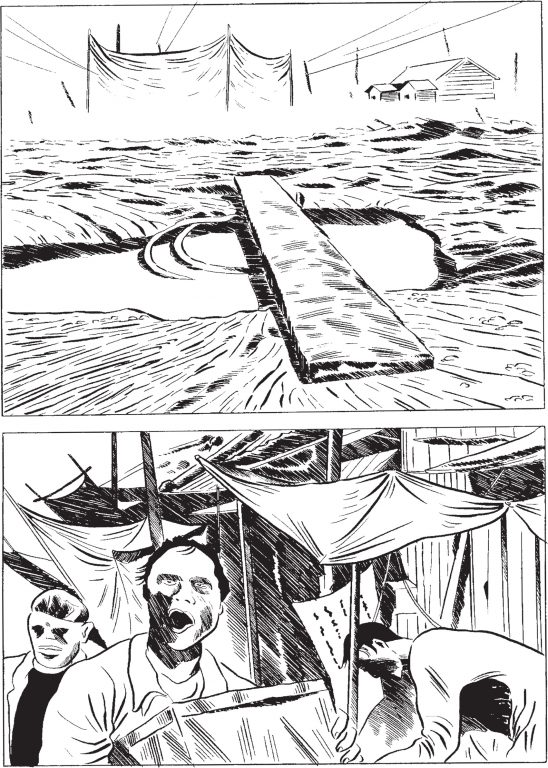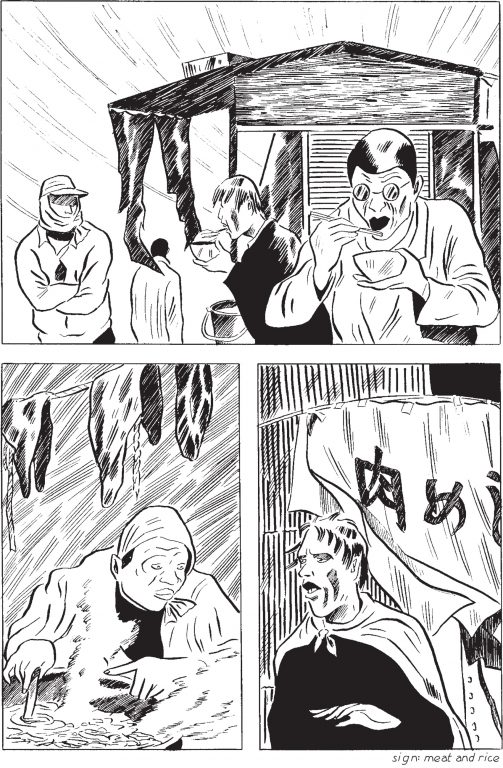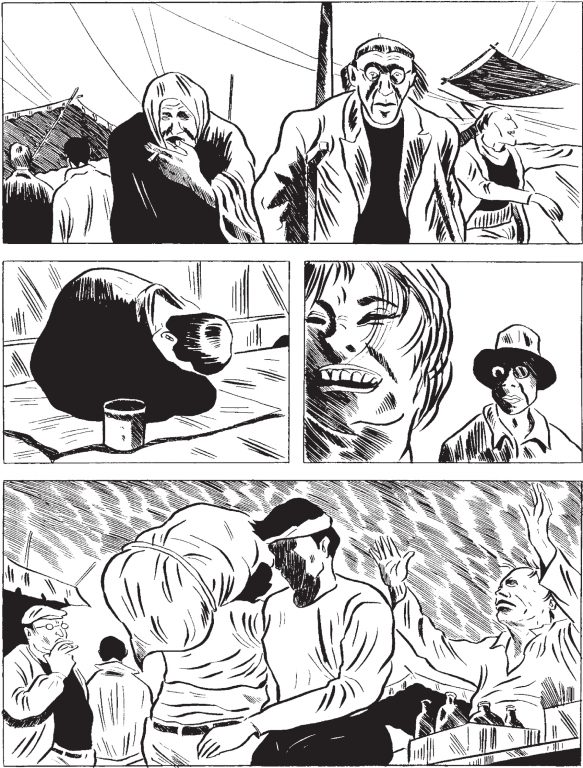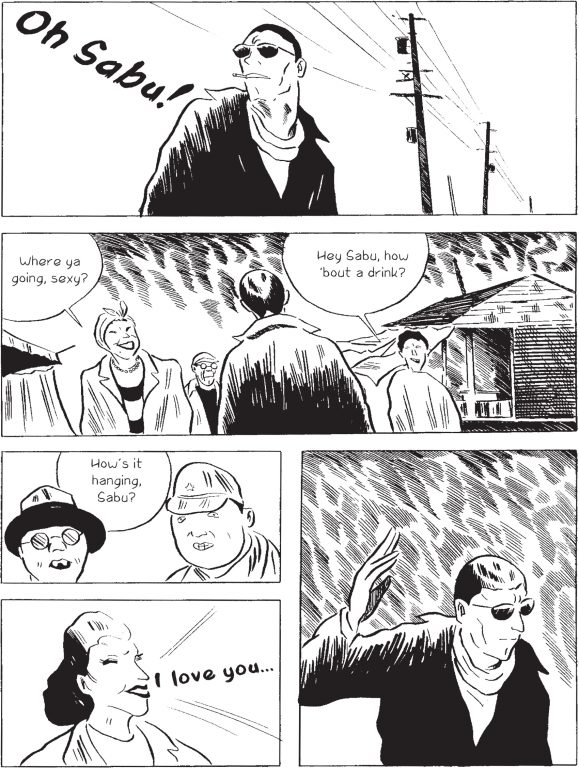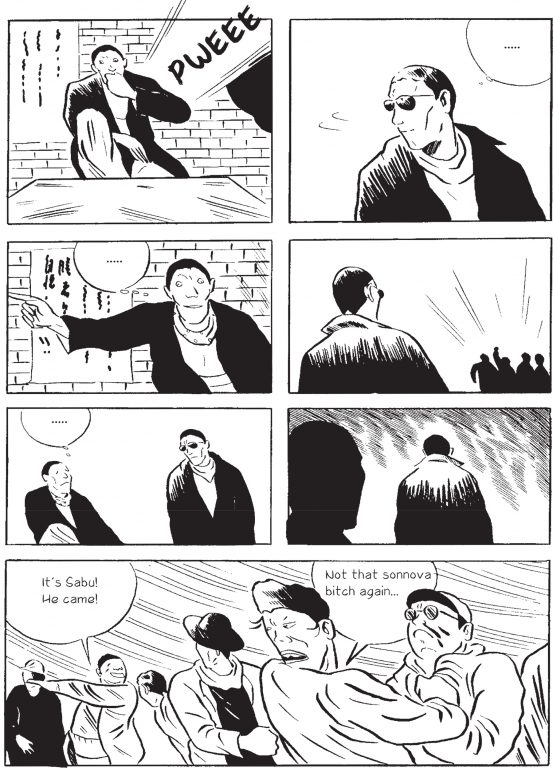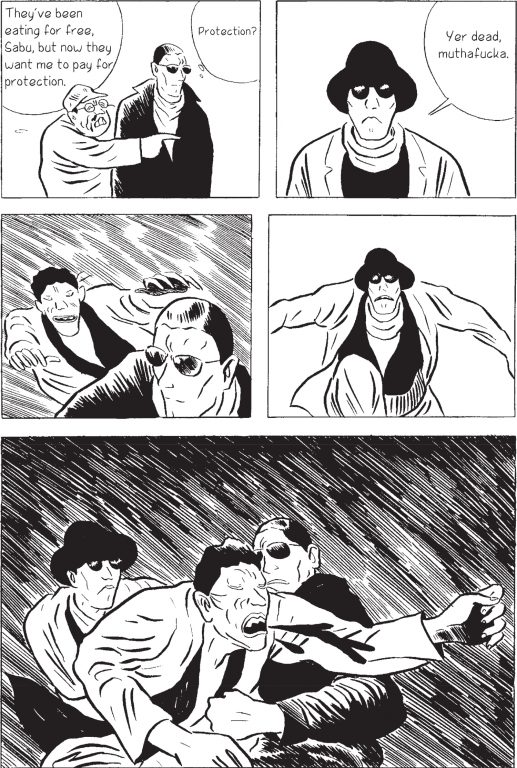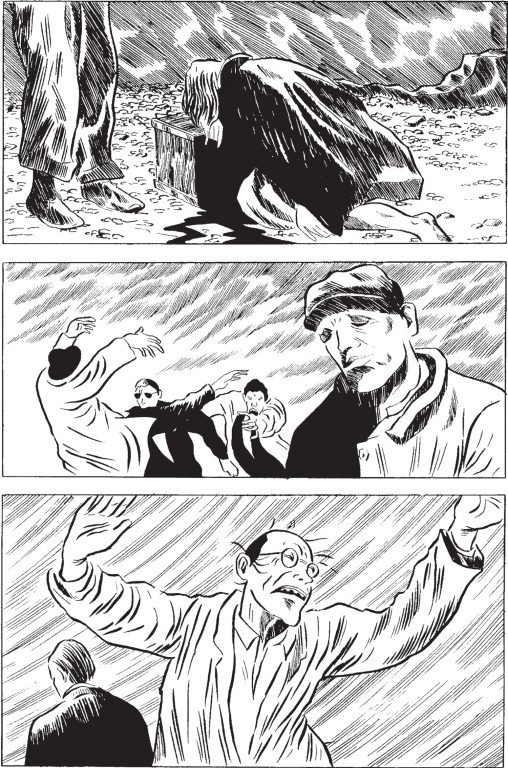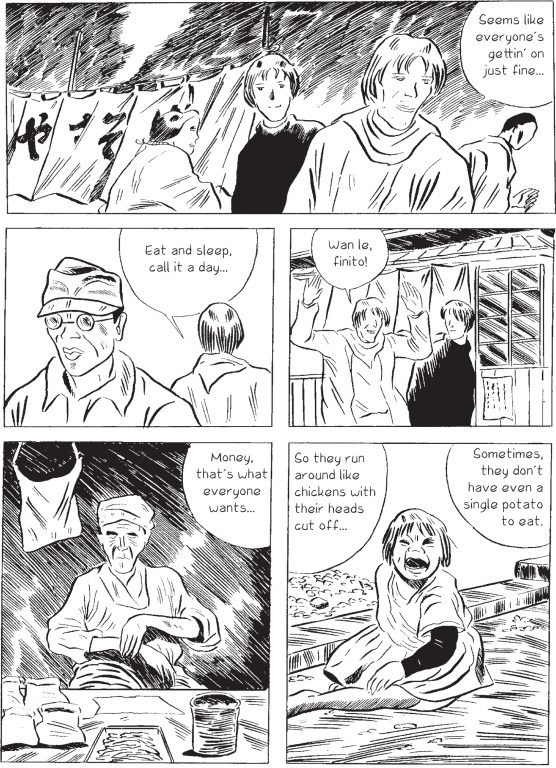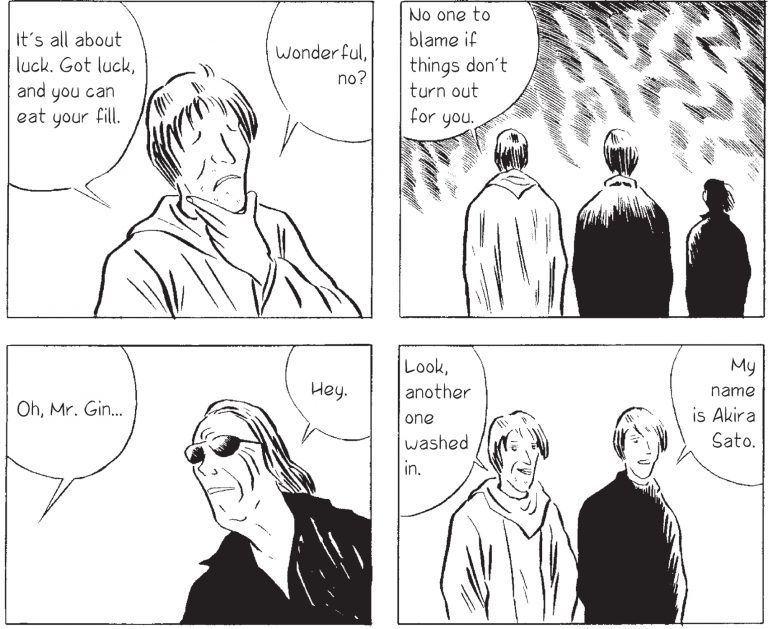This excerpt from Tadao Tsuge’s Slum Wolf, is a collection of the artist’s graphic stories from the late 1960s and 1970s. Accompanying the images is a series of autobiographical articles by Tsuge, describing his time as a young boy in the slums of Tokyo, and how those memories influenced his work:
author’s note: To describe, in the most basic terms, my impressions of Keisei Tateishi, the neighborhood in Tokyo where I grew up, I would say that it was a red-light district and a plywood market and a town of hoodlums in one. I’ll add one more thing: the whole place stunk of sewage.
The housing was chopped up randomly by narrow alleyways, which only increased the number of sewers. In the backmost alleyways, there weren’t even concrete gutters. You’d often find nothing more than a cut gouged out of the earth. Legions of thin and pitiful, capillary-like worms (we called them botta) stuck their bodies half up out of the sludge and undulated in the sewage’s current. Today, it’s hard to imagine such sights being anywhere but in a slum of a foreign country. But from 1950–1951 to mid-decade, pretty much all of the eastern ‘low city’ shitamachi areas of Tokyo were like this . . .
Hoods, yakuza, thugs . . . one usually thinks of violence and blood. When I was a kid, I did witness some big fights where the blood really flew, but I can count those instances on two or three fingers. There weren’t too many bloodbaths, and the neighborhood probably wasn’t large enough to attract yakuza organizations.
In short, there was nothing special about Keisei Tateishi. It was a neighborhood like so many during the postwar recovery. What was it, then, about the place that left me with so many indelible impressions? There were no jobs in those days. Everything, even food, was in short supply. Many adults squatted or stood around looking lost with nothing to do. Most likely, to my third- or fourth-grader eyes, these men just looked like hoods and thugs.
That said, my memory was probably most shaped by the figure of this one thug – Keisei Sabu. I don’t know his real name or what his story was. Where his strange nickname came from is obvious enough. Though I lived in Tateishi for more than ten years, I laid eyes on him only twice, and one of those times was from the back. It was in the middle of the day, in the red-light district. ‘Hey, that’s Keisei Sabu,’ said someone to his buddy in hushed tones as they walked past. Like a fish on a hook, my head yanked back to take a look. I can’t recall exactly, but I must have been in about third grade.
The other time was on a road that passed through the market area. Sabu was stinking drunk and dragging two guys down the street, one under each armpit. ‘It’s just Keisei Sabu,’ some shop owner blurted dully. That’s how I knew who it was. I remember distinctly that I was a second-year student in middle school at the time. However, I couldn’t see him well, as his face was turned down.
That’s it. Just those two times. Pretty meager for fixing a memory, yet perfect for allowing the imagination to run wild. Only shadows without substance can dart about so rampantly.
The above is an excerpt from Slum Wolf, published by New York Review Books. Available in November from NYRB and Foyles.
Image © New York Review of Books

